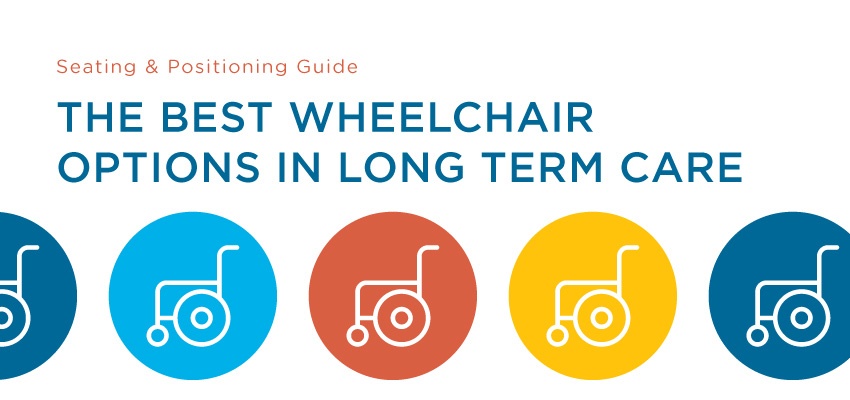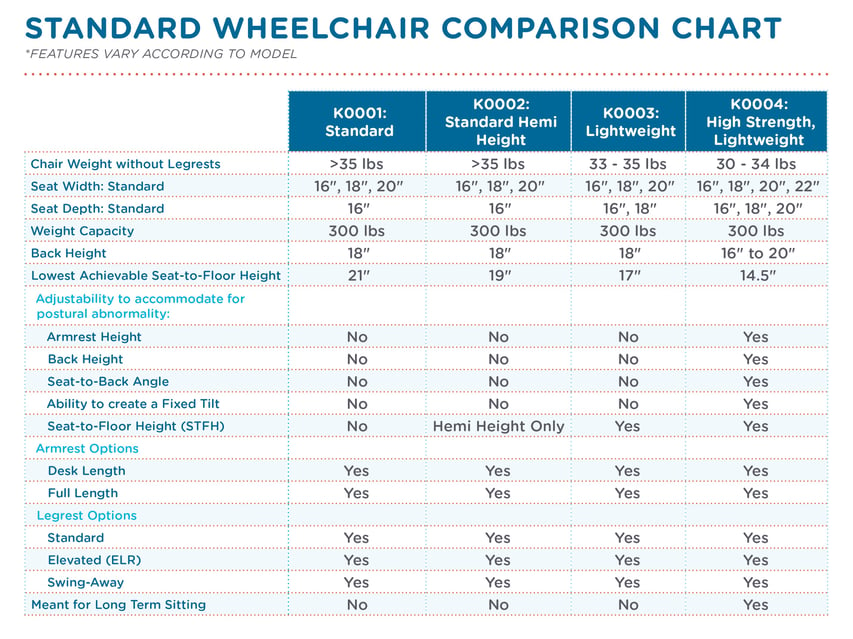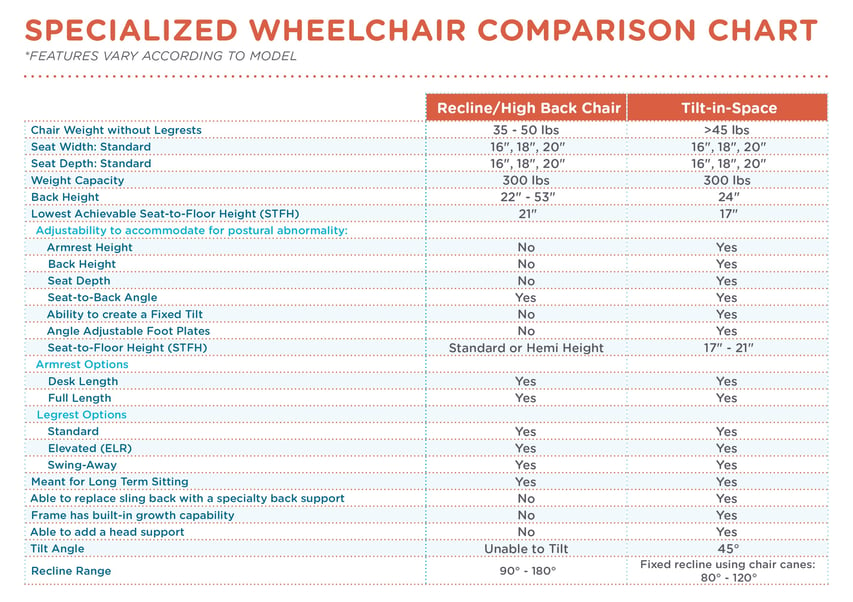Part 1 in our LTC Seating & Positioning series intended to shed some light on the mystery of seating and positioning in the LTC setting.
Despite knowing what is BEST for the resident, there are countless challenges to wheelchair positioning in the LTC setting. The aim of this blog post is to help choose the best wheelchair option for the resident by presenting universal wheelchair terminology, comparing standard wheelchair options, and comparing specialized wheelchair options.
Wheelchair Parts: Knowing the Universal Terminology

Wheelchair Options: Features and Limitations
If I lived in a perfect world and I could purchase the “best” chair for every resident, I would choose the K0005, ultra-lightweight manual wheelchair due to its superior adjustability and ultra-light weight for the elderly resident. However, due to cost, this is usually not a realistic choice in most LTC facilities.
On the other hand, too often in the LTC setting, we see the purchase of a manual wheelchair based on its low upfront cost. When choosing a wheelchair for an LTC resident the cheapest options are often not the best options. Look for that ONE chair with MAXIMUM ADJUSTABILITY to fit multiple body types.
The two charts below breakdown the adjustability of COMMONLY used standard wheelchair options and non-standard wheelchair options.
| Standard Wheelchair Options | ||
|
Very Minimal Adjustability |
Minimal Adjustability |
Most Adjustability |
| K0001/K0002 | K0003 | K0004 |
| Specialized Wheelchair Options | ||
|
Minimal Adjustability |
Minimal Adjustability |
Most Adjustability |
| Gerichair | Recline/High Back Chair | Tilt-in-Space |
Wheelchair Key
K0001: Standard Wheelchair
K0002: Standard Hemi Wheelchair
K0003: Lightweight Wheelchair
K0004: High Strength, Lightweight Wheelchair
K0005: Ultra-Lightweight Wheelchair
Wheelchair Comparison Charts
A note on geriatric chairs
Gerichairs have evolved over the years. Older models, found in several facilities, have little to no adjustability while newer models have more built-in adjustability. Keep in mind, however, that seat width and back support cannot be changed to fit the resident’s individual shape, limiting the therapist's ability to contour the seating system to the resident’s curvature.
Make a change one chair at a time
It is crucial that we as therapists aim to change the mindset of the LTC facilities. For instance, we need to stop forcing elderly bodies permanently changed through years of wear, tear and disease process to fit in K0001-K0003 model wheelchairs. We should no longer try to force the resident to sit with an unrealistic 90-degree angle at the hips, knees, ankles and even elbows. We are setting our residents up for falls, wounds, and injuries. We as younger adults can’t maintain 90-degree postures for 5 minutes, let alone for the 4+ hours our residents sit in these chairs. We are able to begin this change by purchasing manual wheelchair models that can be configured to meet the resident’s body shape and STOP trying to force our residents to “misconfigure” in order to fit the chair’s shape!

Ana Endsjo, MOTR/L, CLT
Clinical Education Manager LTC Division
Ana Endsjo has worked as an occupational therapist since 2001 in a variety of treatment settings. She has mainly worked with the geriatric population, dedicated to the betterment of the treatment of the elderly in LTC centers. Her focus has been on seating and positioning and contracture management of the nursing home resident. With this experience, her hope is to guide other therapists, rehab directors, nurses, and administrators through educational guides, blogs, webinars, and live courses in her role as Clinical Education Manager for the long term care division.



